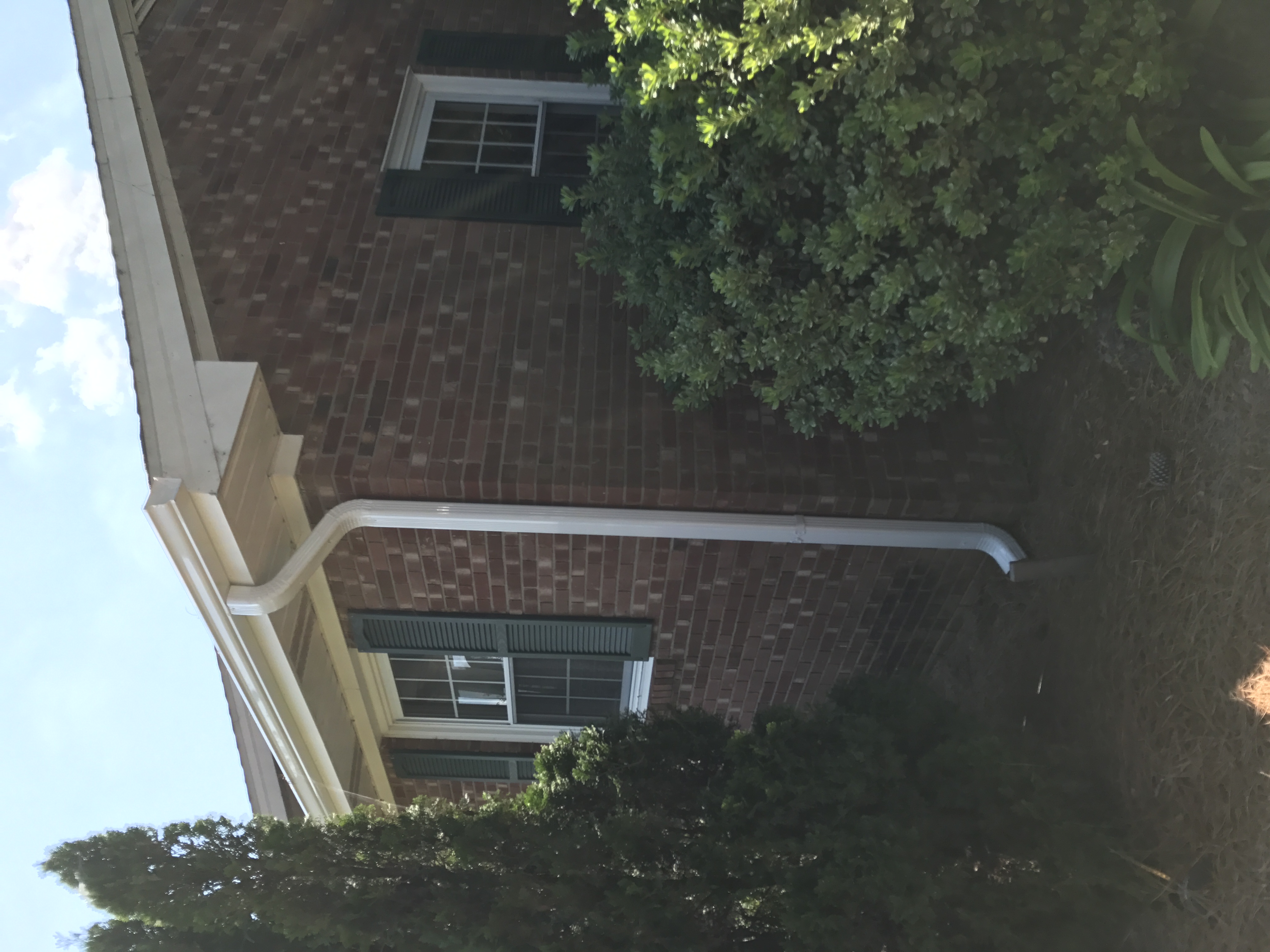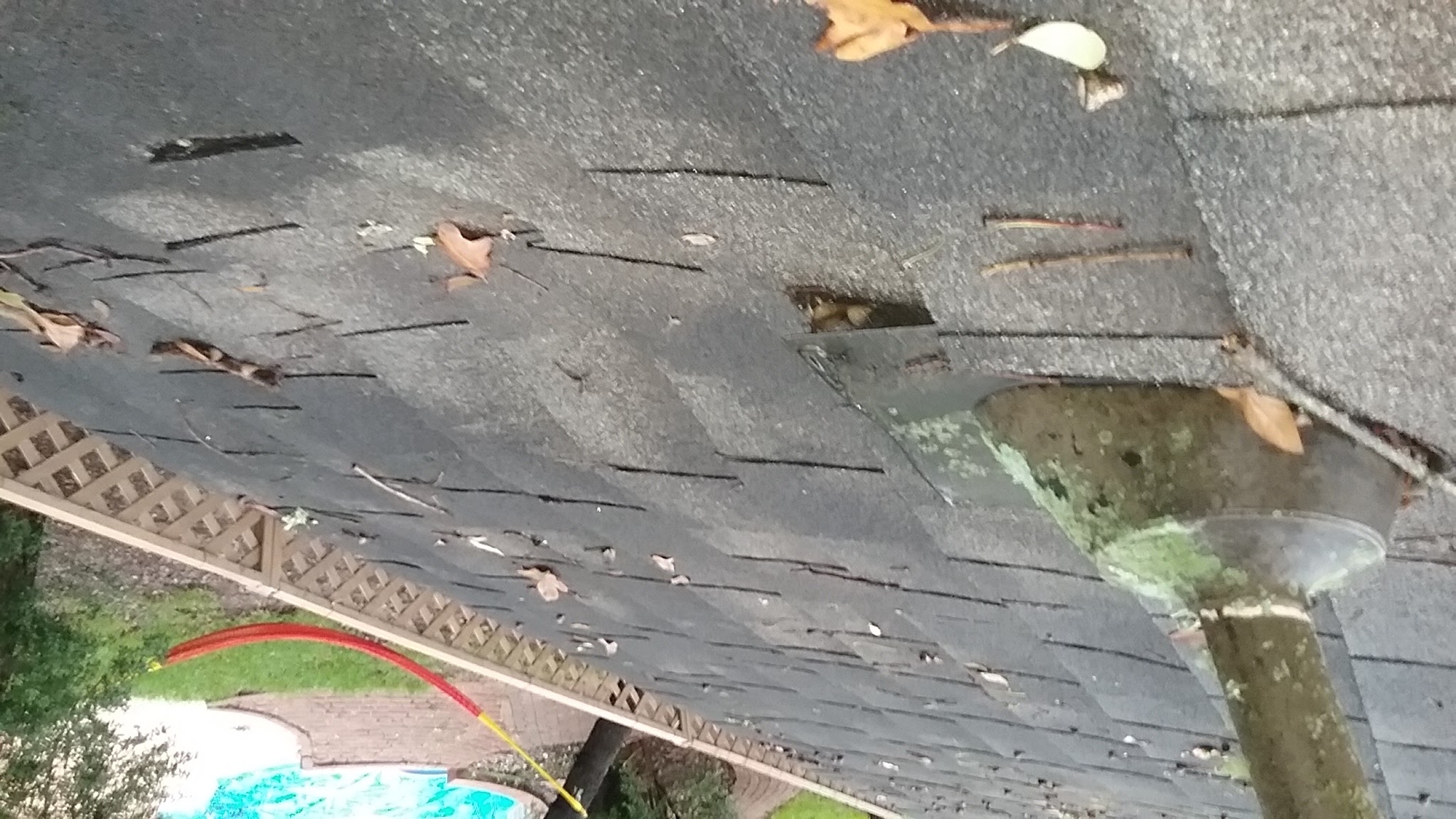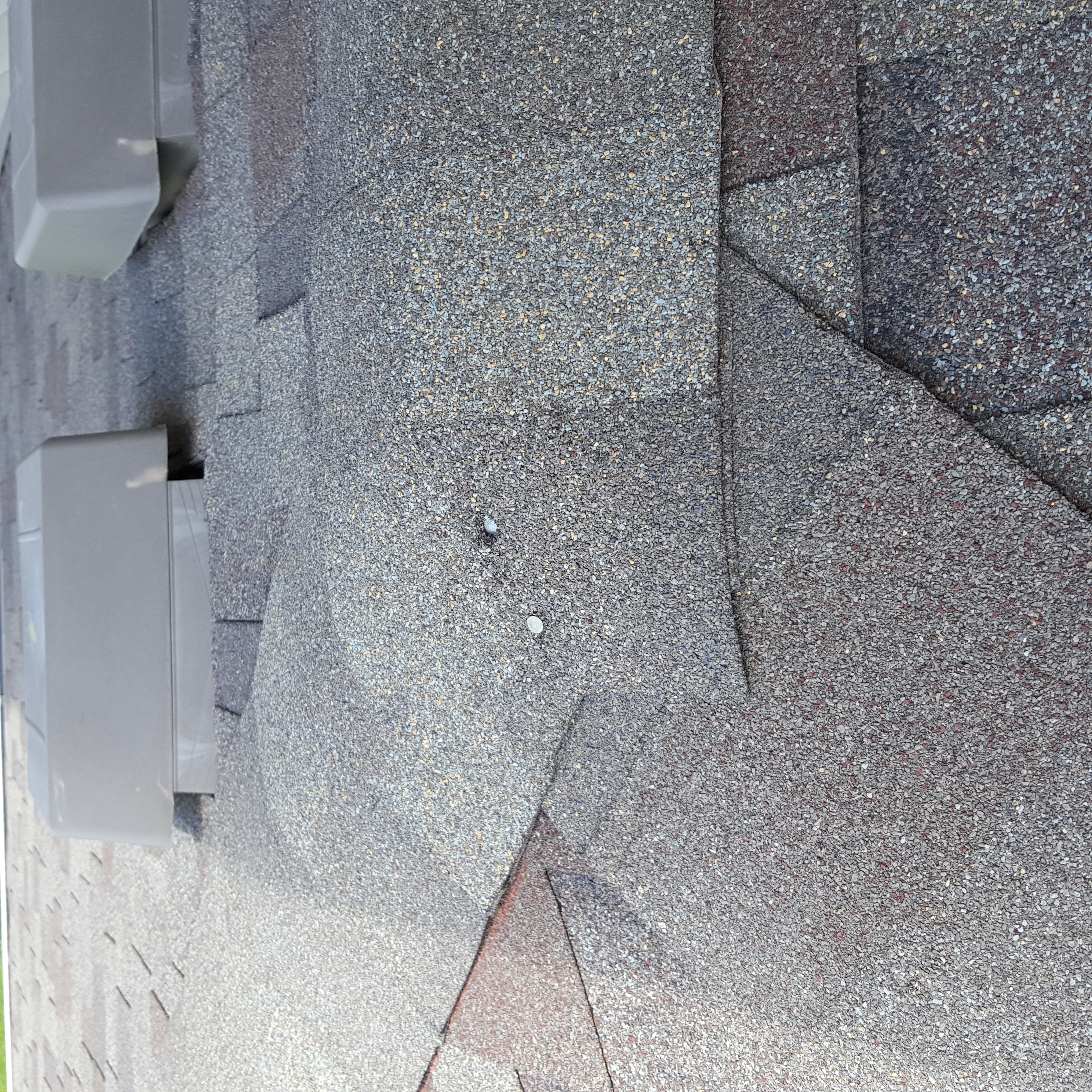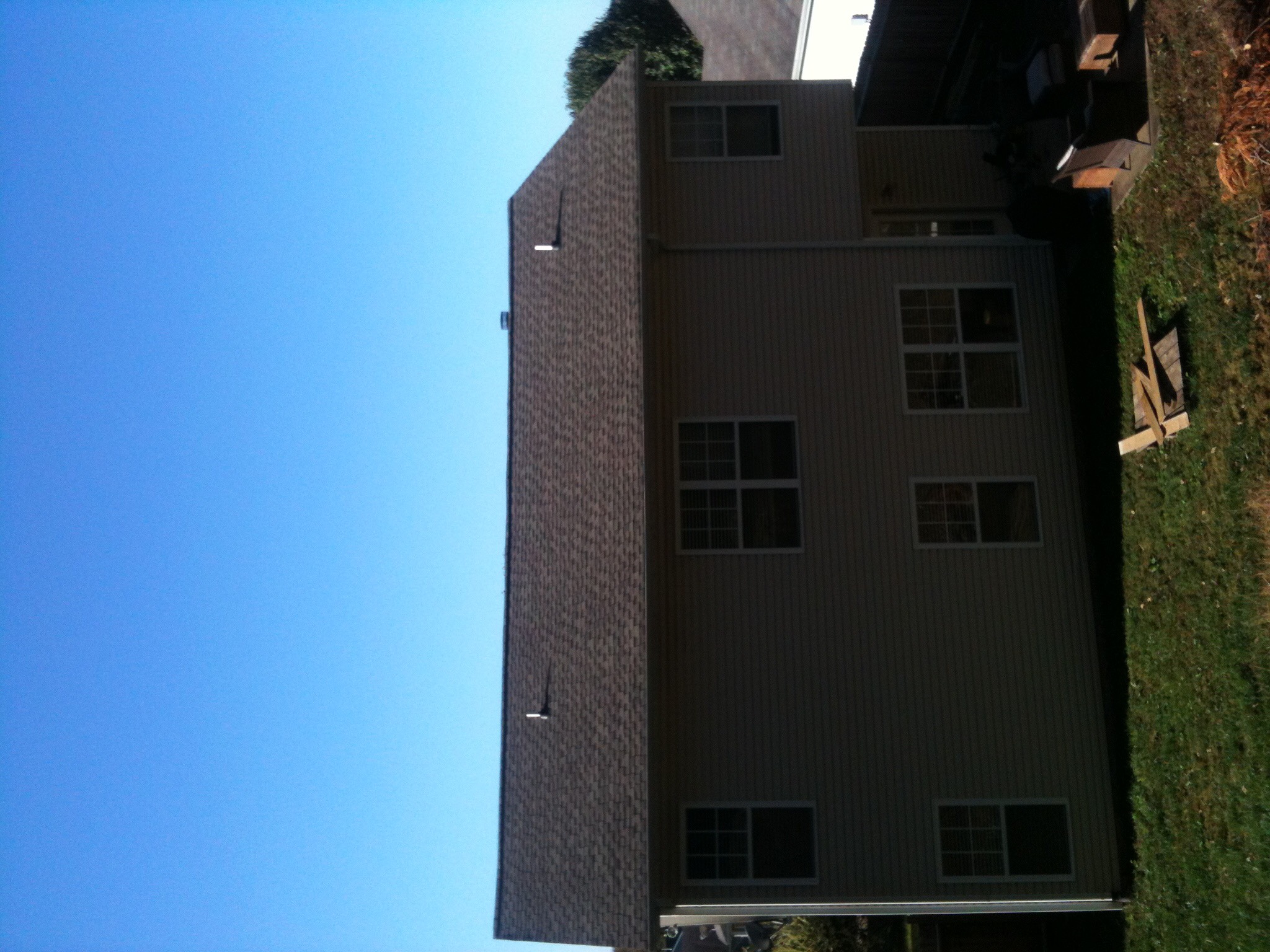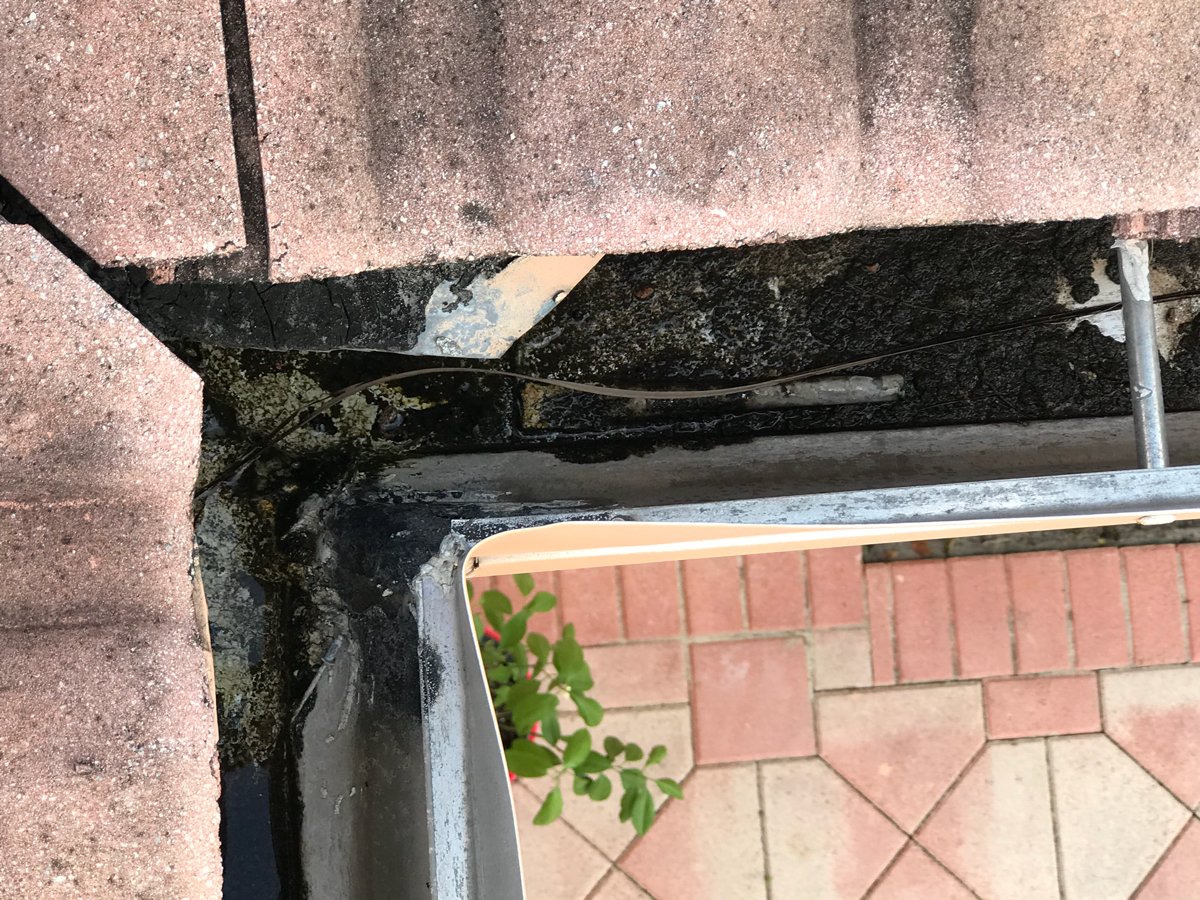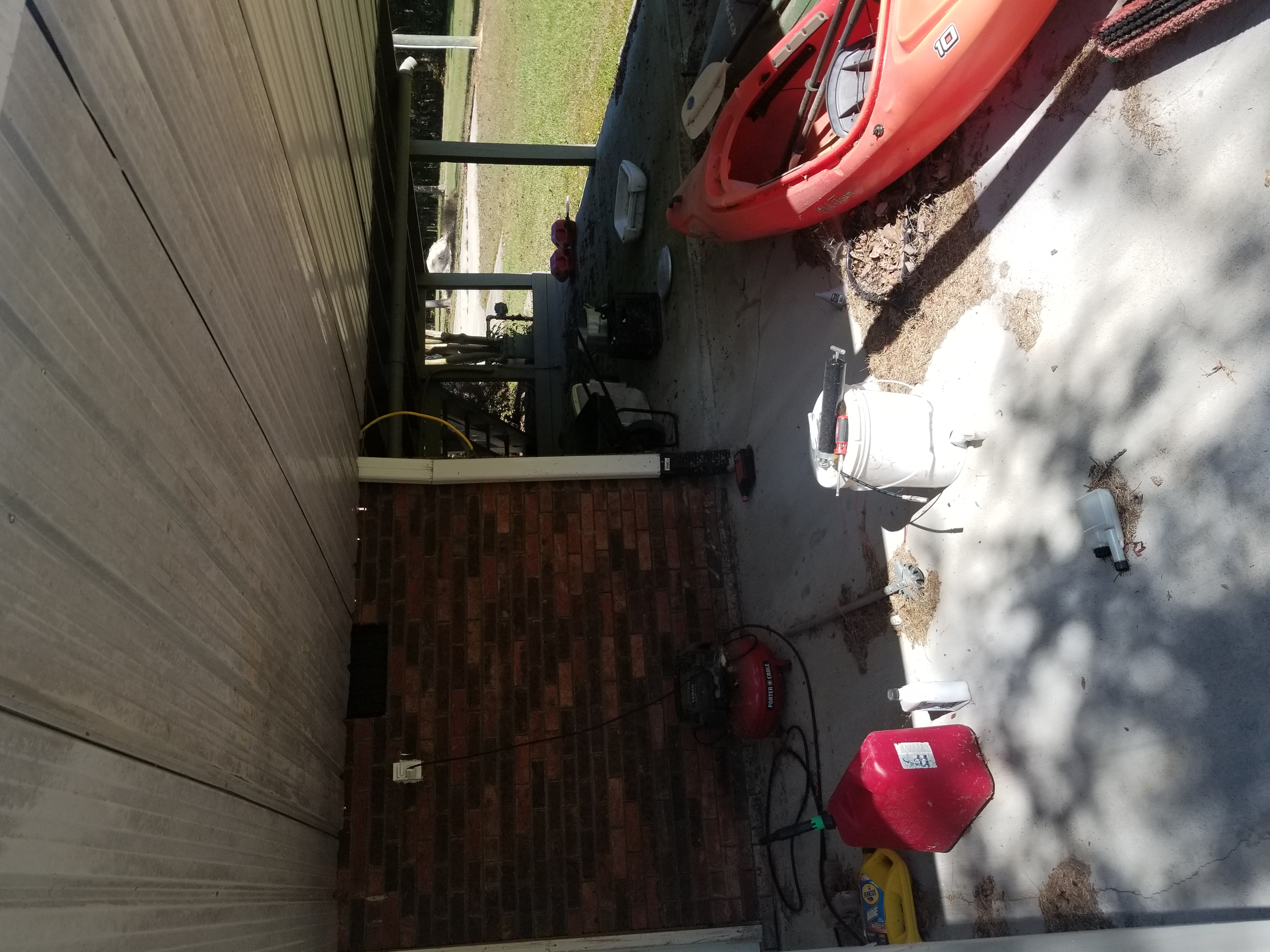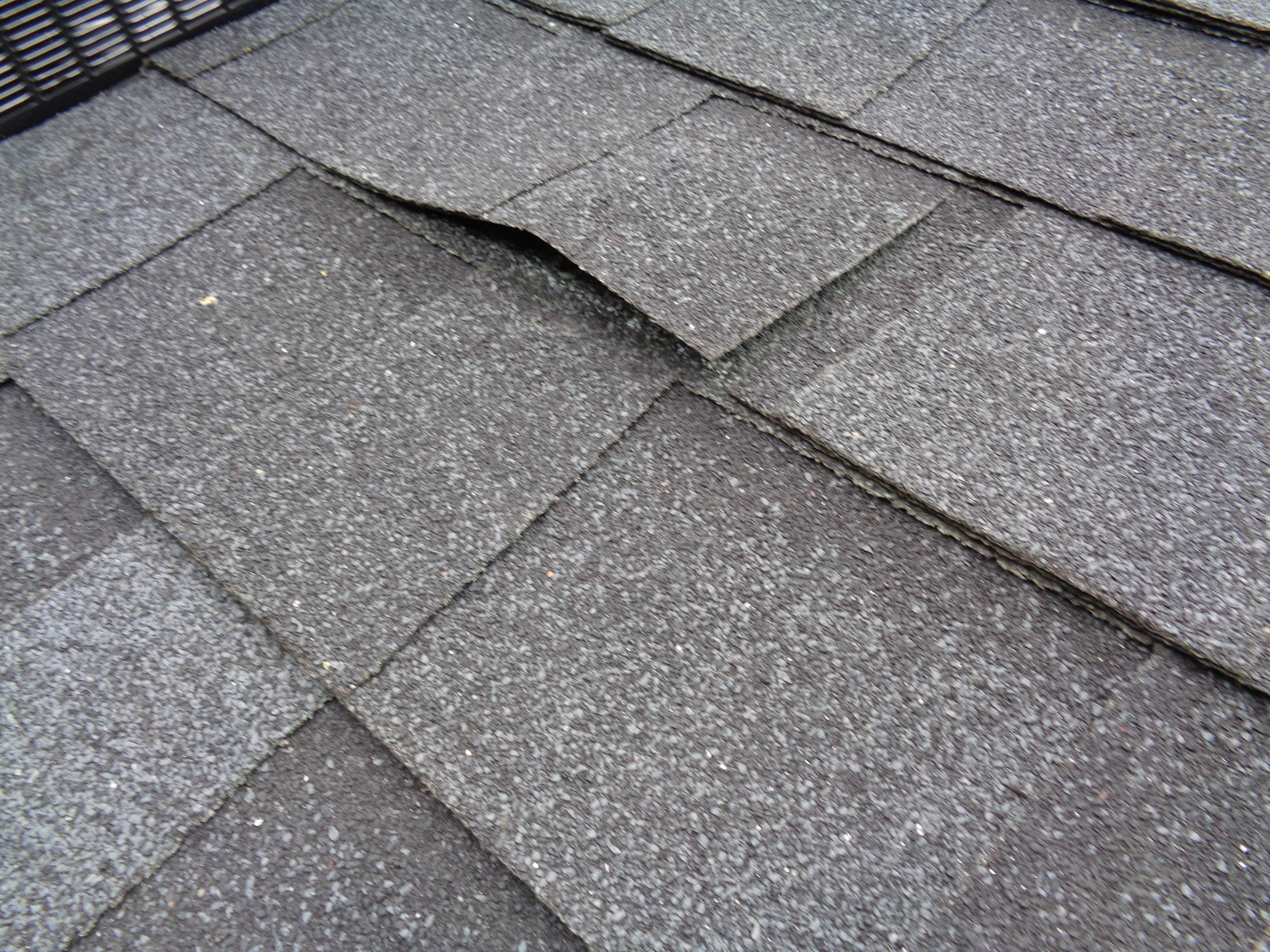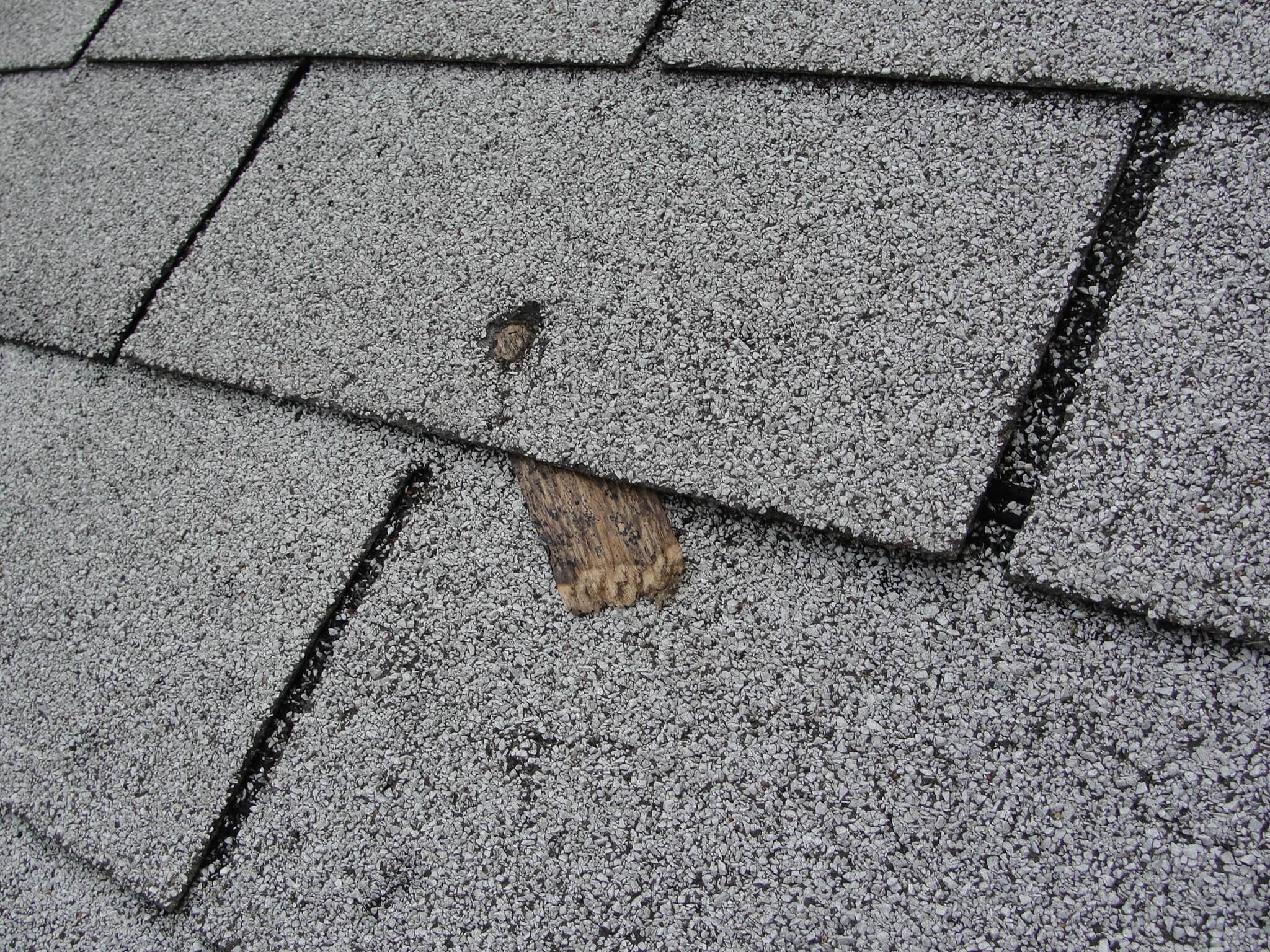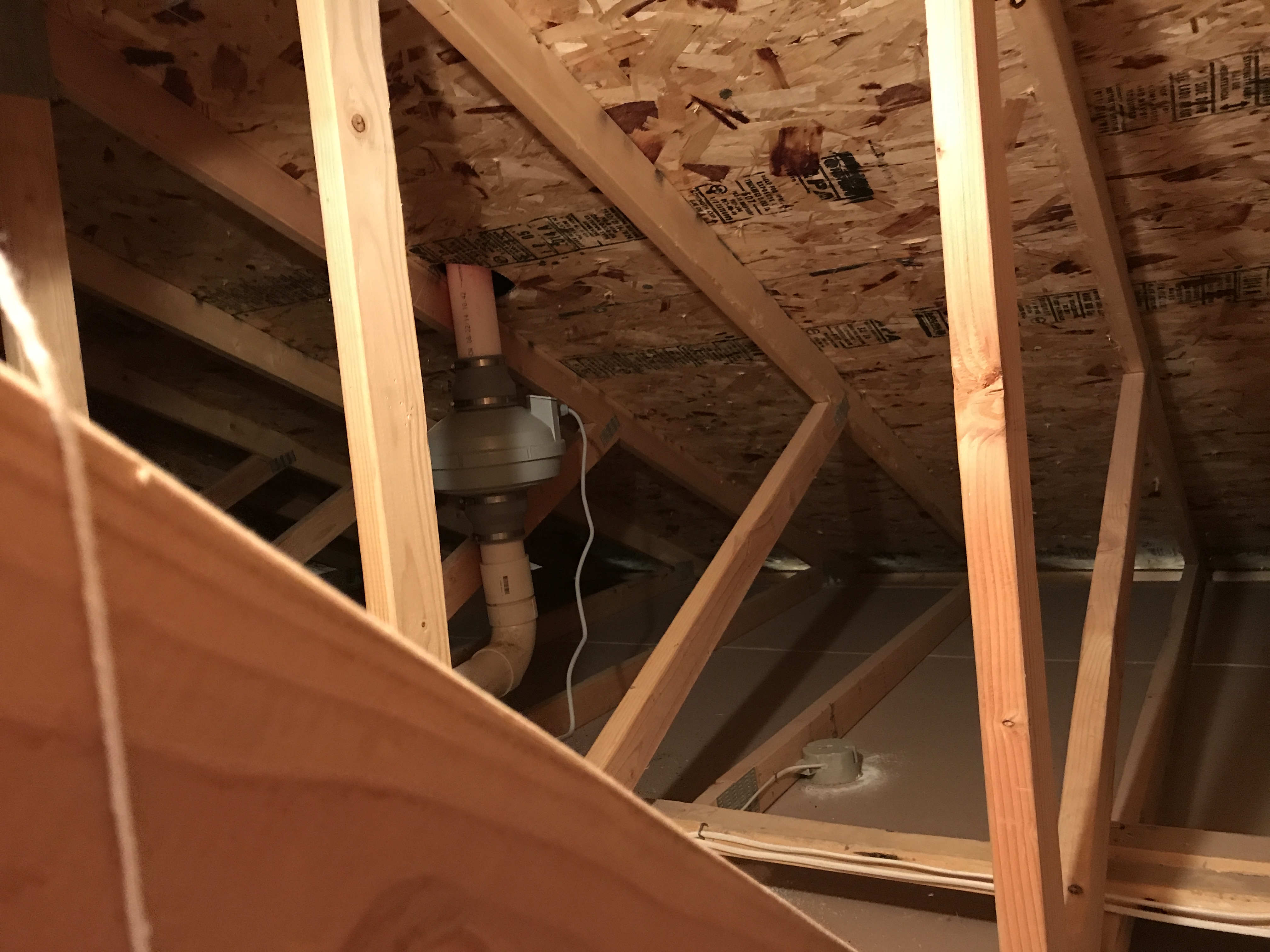Inspecting garages is an important home component. When a truss is found in a garage, it is important to remember that they need to be supported by exterior walls and unaltered as these are structurally engineered. The right sized hangers and correct fasteners are equally as important as using deck screws are sub par because they are resistant to withdraw force and hanger fasteners are shear resistant.
This photo is of the homes down spout, part of the homes gutter system.The system is fairly new ,and looks good except for the exit of the down spout.The gutters collect rain run off from the roof drain down the down spout and is meant to drain away from the foundation of the home, as you can see in this photo the water exite too close to the home and unfortunately the surrounding landscape does not have sufficient down grade for water to drain away from the home.
The roof decking just below the vent pipe penetration is sagging and shows evidence of water intrusion. The vent pipe boot flashing is also deteriorated and shows evidence of water intrusion. Due to these deficiencies its recommended to have a qualified roofing company further evaluate and repair this condition.
In this photo there are two exposed fasteners (nail heads) which are potential moisture entry points and should be sealed. One of the nails is counter sunk, damaging the shingle and the other may not be long enough to secure to shingle to the sheathing, due to the multiple layers.
The picture I reviewed was titled roof leak path of intrusion. The illustration depicted that when shingles and underlayment are missing the roof is susceptible to a leak. Rain water will hit the exposed roof decking and then flow under the shingles on the downslope side of the exposed roof decking. Once the water is under the shingles and underlayment the water will flow to the nearest joint in the roof decking and drip down on the attic or ceiling below.
“How to Clean Moss/Algae off of Asphalt Shingles” - Dark stains on roof could be an indication of granule loss, but it also may be due to algae growth, which is often confused with mold or mildew. While algae is not typically harmful to roof coverings, it isn’t attractive. One way to clean off of the roof is with a 50/50 bleach and water solution. For long term prevention, it is suggested that there could be zinc or copper strips added under the cap shingles.
The property pictured has a gutter system constructed of aluminum. Five downspouts provide sufficient drainage for the approximate eight hundred and fifty square foot roof.
A deficiency was noted in regards to the downspout located on the rear of the house, closest to the patio. It is not carrying rainwater far enough away from the foundation of the home. The soil in this area was exceptionally wet and loose during the time of inspection which was shortly after a moderate rainfall. All other downspouts are properly channeled under ground emptying at least ten feet away from the foundation of the home.
A hill behind the house provides a good vantage point to inspect the gutters on this side. They were notably clean and in good condition. The architectural shingles appear to properly overhang the eaves. There are no nearby trees that pose a risk to damaging the gutter system or causing drainage issues due to leaves during the fall.
All soffit and fascia boards appear to be in good condition. An insect nest was noted in the soffit on the side of the house closest to the garage.
The article titled “Grading and Drainage: Gutters and Maintenance” provides a brief description of why gutters are important, proper gutter maintenance and consequences of poorly installed gutter systems. There is no author listed for the article. This article should not be considered a good reference for educational purposes.
Roof Drainage Systems (gutters and downspouts)
Comments: Repair or Replace
The gutter has dirt, sludge and other debris which should be removed to allow proper drainage preventing damage to the drainage system. There are signs of leakage at the joints. There is damage to the gutters and gutters are not securely fastened to the building as gutter spikes are backing out. A piece of the gutter was disconnected and laid on top of another gutter causing a portion of the cutter to terminate on to the roof. Gutters that drain poorly or clogged can lead to many costly problems such as deterioration of fascia, soffit or roof edge. It can also cause gutters to pull loose and lead to possible water intrusion. A qualified person should repair or replace as needed.
This vent is a turbine vent that is wind powered. It turns freely but is showing a little rust. The roof has some undulations which may be caused from moisture due to not enough ventilation. The soffits dont appear to have any built in ventilation to the attic crawl space.
This is a picture of fairly new eaves trough and downspout on a pre-fab garage package. It is made of aluminum and appears to have the proper slope towards the drainage. You can also see the drip-edge installed properly, and the downspout properly fastened to the siding. the downspout leads to a weeping tile draining away from the structure.
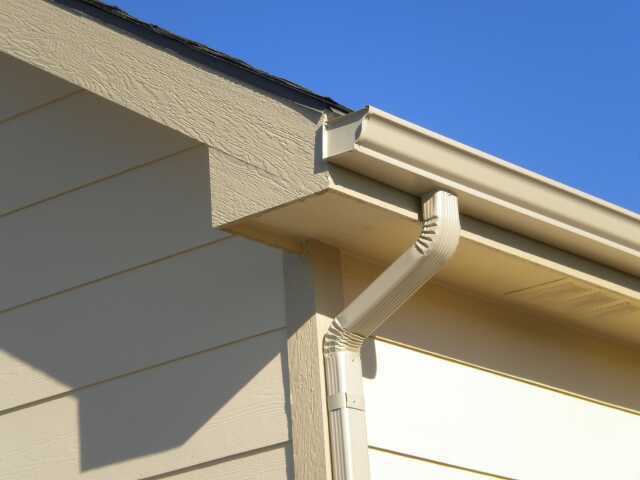
I chose the image Collar and Rafter ties. Depicting where it is acceptable to install collar and rafter ties. This image is helpful in showing the general construction of a roof-truss. How it is supported by the ridge board and how it is fastened to the supporting wall.
In this photo there are 2 things to look at. 1 is the gutter drain fitted inside the Black drainage pipe. The black pipe drains underground, out to a 36 inch concrete drain that flows back into Lake Murray. The second thing is the white metal roof. Ir is also a drain from my deck that flows into its own gutter drain and is discharged in the yard after going over splash guards.
This is an architectural style asphalt shingle, that appeared to be installed recently. Likely less than one year old. The surface was in good condition overall. One issue noted were a few nail pops where the nail under the layer of shingle backed out producing the uplifted shingle as seen in the picture.
I read the article on mastering roof inspections part 1. It brings out that the most common residential roof covering is an asphalt or composition shingle. These are two words generally describing the same product. An asphalt shingle is composed of a cellulose or more common fiberglass mat with an asphalt layer above it. The fiberglass mat is often more durable than its organic counterpart. This is in part because it does not absorb moisture like an organic material.
This is a photo of a furnace exhaust vent pipe penetrating a roof with three tab asphalt shingles. It appears to have damage on the cap possibly from hail, the flashing looks good but the sealant is starting to crack and wear
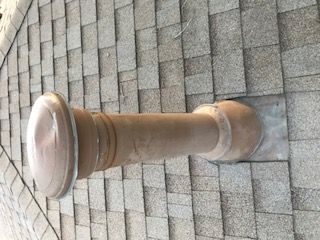
While walking a roof, i found this shingle with a popped nail and shim underneath. I took photos and reported it on the inspection report stating a roofer needs to further evaluate but that it should be repaired to mitigate any water intrusion that could occur.
The article I read talked about 15 tools every homeowner should have and the importance of these basic items to have around the house. Every homeowner will eventually have problems around the house which can be fixed without having to call a contractor. I did not name the items listed but they can be referenced by going to www.nachi.org/articles.
I chose the article on Bloom Boxes to write about. It was very informative and exciting for the future. Not only can these boxes power many homes and larger businesses, they use a smaller carbon footprint and provide energy by a chemical reaction of air and gas. They are not as reliable however as when they are down they are down and one company a small dust storm cause air filters to be clogged and shut down the units. Overall Bloom Boxes are a great invention.
This is a truss framed roof. The roof sheathing is half inch oriented strand board. I see no evidence of moisture. I can see that the proper fasteners were used for singles and h-clips for proper gap in sheathing. There is a radon control system vented through roof above garage. I will note there is no insulation above garage. The rest of the house has 10 inches of blown cellulose insulation. Roof vents and soffit vents were used for ventilation. I would recommend installing baffles for better ventilation.
